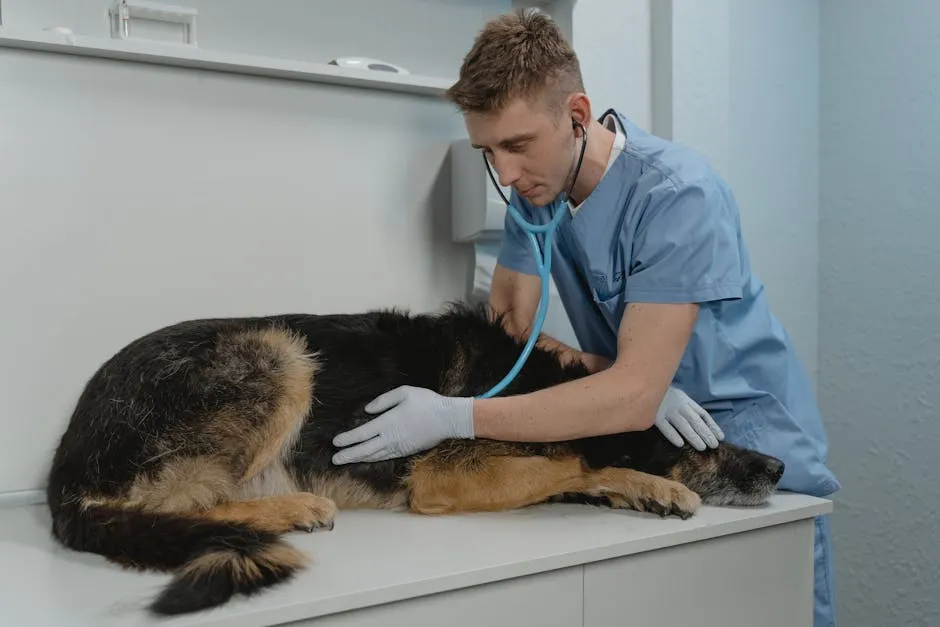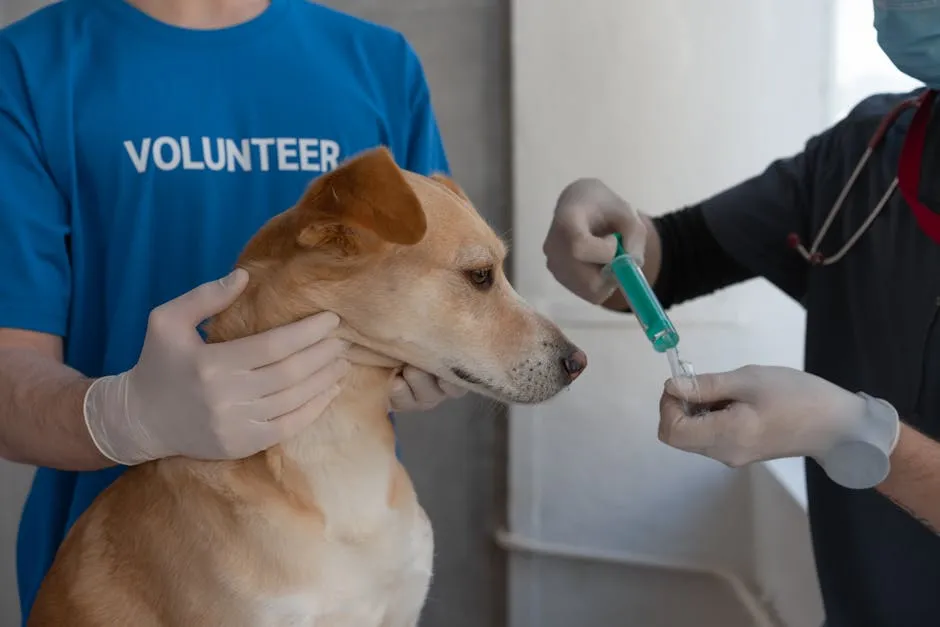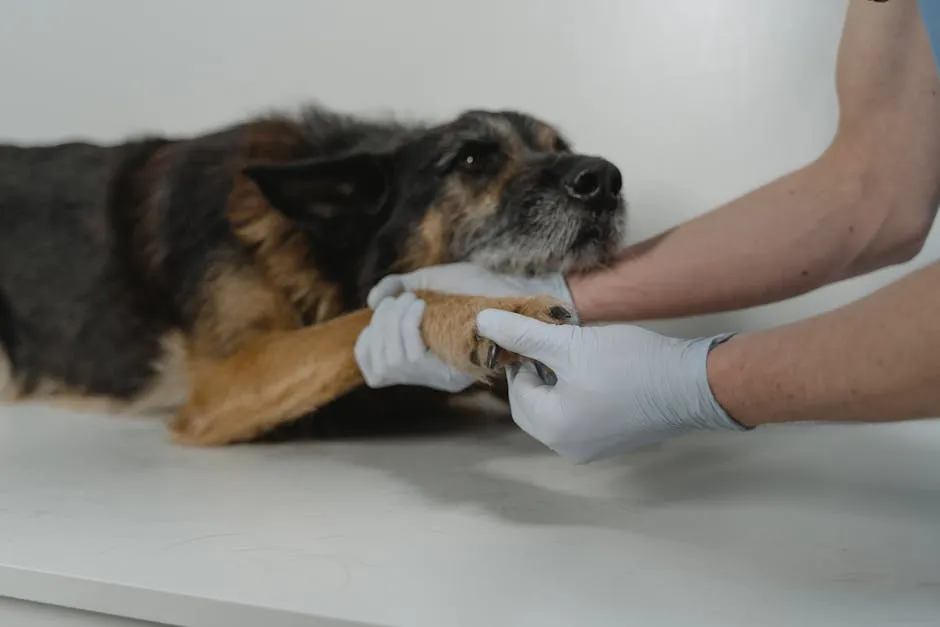Introduction
Let’s talk about gabapentin for dogs. No, it’s not a magic potion for turning your pup into a superhero. But, it’s pretty close! Originally developed for humans, this little pill has made quite the leap into the canine world. Gabapentin is now a go-to medication in veterinary medicine, tackling everything from anxiety to seizures. Much like that one friend who can’t stop talking about their new diet, gabapentin is gaining popularity among pet owners and veterinarians alike.
Imagine your furry friend in a world where they can tackle nerve pain, anxiety, or pesky seizures with a simple pill. Sounds dreamy, right? But before you rush to the pharmacy, hold those horses! Understanding the ins and outs of gabapentin is crucial. This medication comes with its own set of benefits and risks, and a vet consultation is essential before you give it a go. After all, we want to keep our furry pals happy and healthy!
As we dive deeper, you’ll discover why gabapentin is becoming a staple in treating various canine conditions. Whether it’s calming your anxious pooch during thunderstorms or managing chronic pain from arthritis, gabapentin is here to lend a paw. Just remember: a little knowledge goes a long way. So, let’s fetch the details on gabapentin to ensure our pups get the best care possible!
Speaking of care, if your dog experiences anxiety or stress, consider using Dog Anxiety Relief Chews. These tasty treats can help ease your dog’s stress during thunderstorms or fireworks, making those stressful moments a bit less daunting.

Summary Section
In this blog post, we’ll cover everything you need to know about gabapentin for dogs. Here’s a sneak peek at the key points we’ll discuss:
- What is Gabapentin? This medication serves as an anticonvulsant and analgesic, primarily used to manage pain, seizures, and anxiety in dogs.
- Conditions Treated: Gabapentin is commonly prescribed for chronic pain, seizures, and anxiety in dogs. It works wonders for conditions like arthritis, intervertebral disk disease, and even situational anxiety during stressful events.
- Dosage Guidelines: We’ll provide you with essential dosage information, including how it varies based on your dog’s weight and the condition being treated.
- Potential Side Effects: Like any medication, gabapentin comes with potential side effects. We’ll highlight common reactions and precautions you should be aware of.
- Veterinary Consultation Importance: We’ll stress the need for consulting a veterinarian before administering gabapentin to ensure it’s safe and effective for your furry friend.
- Alternatives to Gabapentin: Finally, if gabapentin isn’t the right fit for your dog, we’ll discuss alternative medications that can help manage similar conditions.
By the end of this post, you’ll have a comprehensive understanding of gabapentin for dogs, equipping you to make informed decisions about your pet’s health. Let’s get into the nitty-gritty and ensure our four-legged pals lead happy, pain-free lives!

What is Gabapentin?
Definition and Background
Gabapentin is an anticonvulsant originally designed for humans. It was initially developed to treat epilepsy and neuropathic pain, but it has successfully crossed over into veterinary medicine. In this new role, it has become a versatile tool for veterinarians, prescribed off-label for various conditions in dogs. This means while it’s not specifically approved for canine use, veterinarians can still use it when deemed appropriate.
Mechanism of Action
How does gabapentin work its magic? It interacts with calcium channels in the brain, effectively calming those overly excited nerve signals. By doing so, it reduces the release of excitatory neurotransmitters like glutamate. This action makes it effective in alleviating pain and controlling seizures. Moreover, its ability to provide a calming effect can help soothe anxious pups during stressful situations, like trips to the vet or loud thunderstorms. Gabapentin is a multi-tasker, helping dogs feel more comfortable and at ease.
Now that we’ve set the stage, let’s dive deeper into how gabapentin can help our furry companions!

Uses of Gabapentin in Dogs
Gabapentin is like a Swiss Army knife for dogs, tackling multiple issues with one handy pill. This medication is primarily known for its role in treating seizures, managing pain, and easing anxiety in our furry companions. Let’s break down the specifics.
1. Treating Seizures
Gabapentin shines as an anticonvulsant, especially for dogs suffering from refractory seizures. These are the stubborn seizures that don’t respond well to standard treatments. When other medications fail to do the trick, gabapentin steps in like a superhero ready to save the day.
The typical dosage ranges from 10-20 mg/kg administered every eight hours. This frequency allows for a steady level of medication in the dog’s system, crucial for effective management. It’s important to work closely with your veterinarian to fine-tune the dosage for your pup’s unique needs.
2. Pain Management
Chronic pain can turn your playful pooch into a grumpy couch potato. Gabapentin comes to the rescue here as well, providing relief for conditions like arthritis and intervertebral disc disease. It’s particularly effective for neuropathic pain, which is often tricky to manage.
Whether your dog is limping from arthritis or recovering from surgery, gabapentin helps ease discomfort. It can be used alone or in combination with other pain relievers, enhancing overall pain management strategies. The usual dosage for chronic pain starts at about 5-15 mg/kg every 12 hours, but be sure to follow your vet’s guidance on adjusting it as needed.
And to help support your dog’s joints, consider adding a Dog Joint Supplement with Glucosamine to their diet. It can help alleviate joint pain and improve mobility, making it easier for them to enjoy their playful antics!

3. Easing Anxiety
Is your dog a bundle of nerves during thunderstorms or when visiting the vet? Gabapentin might be the answer to calming those anxious jitters. This medication has a soothing effect, making it easier for dogs to handle stressful situations.
For situational anxiety, such as before a vet visit or during fireworks, a dosage of 30-60 mg/kg can be given one to two hours prior to the event. This approach allows your dog to relax, turning anxious barks into peaceful snores while the world rumbles outside.
And if you’re looking for a more immediate calming solution, consider a Dog Calming Collar. This nifty accessory releases calming pheromones to help ease your dog’s anxiety, making them feel secure and relaxed.
Gabapentin is a versatile tool in the canine healthcare toolkit. It’s essential to consult your veterinarian to determine the best use and dosage for your dog’s specific needs. Your furry friend deserves to live a pain-free, anxiety-free life, and gabapentin could be a vital part of that equation.

Side Effects and Precautions
Common Side Effects
Gabapentin is generally well-tolerated in dogs, but it’s not without its quirks. The most common side effects include sedation and incoordination. Imagine your pup suddenly feeling like they’ve had one too many treats—wobbly, sleepy, and maybe a bit confused. These effects can vary from one dog to another, and while some may seem like they’re floating on cloud nine, others might struggle a bit more.
But wait, there’s more! Gabapentin can occasionally lead to more severe reactions, especially in dogs with underlying health issues. If your furry friend has pre-existing conditions, like kidney or liver disease, the risk of adverse effects may increase. Keep an eye out for any unusual behavior or symptoms, and always consult your vet if you notice anything concerning. Remember, it’s better to be safe than sorry when it comes to our beloved companions!
Precautions
Now, let’s chat about precautions. When it comes to gabapentin, caution is key—especially for dogs with kidney or liver diseases. Since gabapentin is processed through these organs, any impairment can lead to prolonged effects or increased side effects. Your veterinarian will likely monitor these dogs closely to ensure everything runs smoothly.
And here’s a biggie: never, ever use human formulations of gabapentin that contain xylitol. This sugar substitute is toxic to dogs and can be lethal. Always opt for veterinary-approved medications and formulations to keep your furry friend safe. If in doubt, don’t hesitate to reach out to your veterinarian for advice. Your pup’s health is worth it!

Combining Gabapentin with Other Medications
Safe Combinations
Gabapentin isn’t a lone wolf. It can be combined safely with several other medications to enhance its effects. For instance, many veterinarians prescribe trazodone alongside gabapentin for anxiety management. This dynamic duo works wonders, especially during stressful events like vet visits or thunderstorms.
Additionally, gabapentin can be paired with NSAIDs (non-steroidal anti-inflammatory drugs) for pain management. This combination can provide a more comprehensive approach to tackling chronic pain, arthritis, or post-surgical discomfort. However, always check with your veterinarian before making any changes to your dog’s medication regimen. They’ll help ensure your pup gets the best care without any unwanted surprises.

Interactions to Avoid
While gabapentin has some great combinations, it’s not compatible with everything. Certain medications can interact negatively with gabapentin, which is why it’s crucial to inform your veterinarian about any other drugs your dog is taking. This includes over-the-counter medications, supplements, or herbal remedies. For example, combining gabapentin with antacids that contain aluminum, magnesium, or calcium can hinder its absorption.
In short, communication with your vet is vital to avoid any potential pitfalls. With the right combinations and precautions, gabapentin can be a powerful tool in managing your dog’s health and well-being.

Alternatives to Gabapentin
If gabapentin isn’t the right fit for your dog, don’t fret! There are alternative medications that can step into the spotlight, providing relief for pain and anxiety. Here are a few options to consider:
Lyrica (Pregabalin)
Lyrica is like gabapentin’s slightly more sophisticated cousin. It’s designed to treat neuropathic pain and anxiety. What makes it appealing? Lyrica tends to work faster and at lower doses than gabapentin. This means your pup might feel relief sooner—always a plus when they’re in discomfort!
Amantadine
Originally used for treating Parkinson’s disease in humans, amantadine has made its way into veterinary medicine. It works by blocking certain receptors in the brain, potentially improving mobility and managing pain when combined with NSAIDs. This can be particularly beneficial for dogs with chronic pain conditions.
Non-Pharmaceutical Options
Don’t forget about non-drug alternatives! Sometimes, simple lifestyle changes can make a world of difference. Consider:
- Physical Therapy: A tailored exercise routine can strengthen muscles and improve mobility, offering natural pain relief.
- Acupuncture: This ancient practice can help alleviate pain and anxiety, turning your pup into a zen master.
- CBD Oil: Some studies suggest CBD oil may help reduce anxiety and pain in dogs. Just be sure to consult your vet, as quality varies widely.

Individualized Treatment Plans
It’s crucial to remember that each dog is unique. What works wonders for one pup may not be effective for another. That’s why individualized treatment plans are essential. Your veterinarian can assess your dog’s specific needs, health status, and lifestyle to create a tailored approach. This might involve a combination of medications or therapies, ensuring your furry friend gets the best care possible.
In the end, whether it’s gabapentin, Lyrica, or a holistic approach, the goal is the same: to keep your dog happy, comfortable, and wagging their tail. And while we’re on the topic of comfort, consider investing in a Dog Bed for Joint Support. A comfy bed can help your pup rest and recover, making all the difference in their overall health.

FAQs
Is gabapentin safe for all dogs?
Gabapentin isn’t a one-size-fits-all solution. While it’s generally safe for many dogs, individual health conditions matter. Dogs with kidney or liver issues may experience prolonged effects. Allergies to gabapentin or similar medications can also be a concern. Always consult your veterinarian before starting treatment, as they can assess potential risks based on your dog’s health history.
How quickly does gabapentin work?
Gabapentin usually kicks in within one to two hours after administration. However, the effects can vary depending on the dog’s condition. For instance, while some dogs may experience quick relief from pain, it might take longer for seizure control. The duration of its action is typically around eight to twelve hours, but it may last longer in dogs with kidney or liver problems.
Can I give my dog human gabapentin?
Using human formulations of gabapentin for dogs is a big no-no! These products may contain ingredients harmful to pets, like xylitol, which is toxic to dogs. Always stick to veterinary-prescribed versions. Your vet knows the right dosage and formulation to ensure your furry friend stays safe and gets the best care.
What should I do if I miss a dose?
If you miss giving your dog a dose of gabapentin, don’t panic! Administer it as soon as you remember unless it’s almost time for the next dose. In that case, skip the missed dose and resume the regular schedule. Doubling up is a definite no-go, but if you’re unsure, give your veterinarian a shout for guidance.
What are the signs of gabapentin overdose?
Overdosing on gabapentin can lead to serious issues. Signs include extreme lethargy, severe sleepiness, and incoordination. Some dogs may even experience vomiting or diarrhea. If you suspect an overdose, immediate veterinary attention is crucial. Don’t take chances—contact your vet or an animal poison control center right away to ensure your pup gets the help they need!
Please let us know what you think about our content by leaving a comment down below!
Thank you for reading till here 🙂
For more information on the use of gabapentin in veterinary medicine, check out this article on gabapentin for dogs.
All images from Pexels





